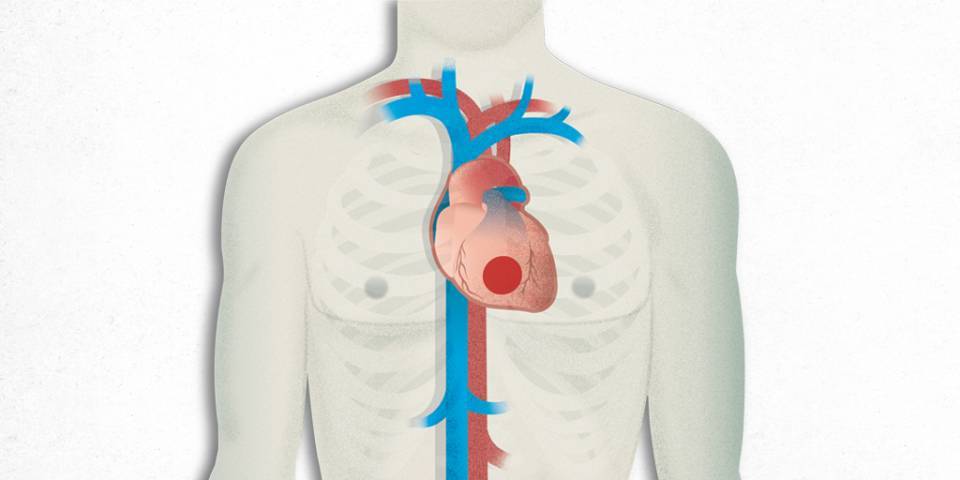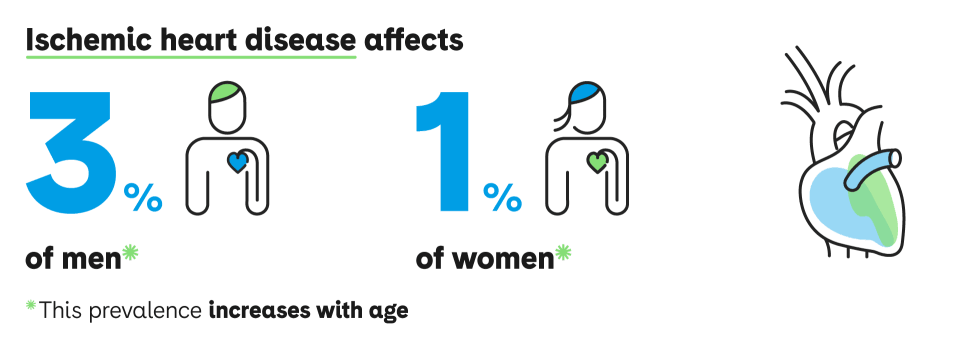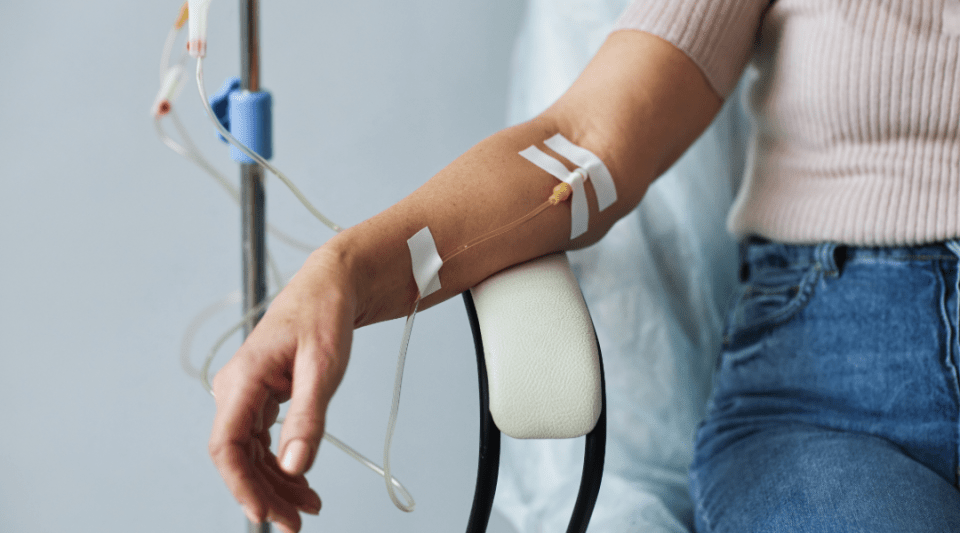- What is it?
- Causes and risk factors
- Symptoms
- Tests and diagnosis
- Treatment
- Disease evolution
- Living with disease
- Research lines
- Frequently asked questions
- Prevention
-
La enfermedad en el Clínic
-
Equipo y estructura
What is Ischemic Heart Disease, heart attack or angina pectoris?
Ischaemic heart disease is a cardiovascular disease that occurs when the coronary arteries, which supply blood to the heart muscle, are partially or completely blocked, causing a lack of blood flow. If the coronary artery becomes partially and progressively blocked, it leads to angina while, if it is fully and suddenly blocked, it can cause a heart attack.
Ischaemic Heart Disease explained in first person
As doctors, we can be very helpful to patients, but what they do is really more important because it truly can improve their prognosis: give-up smoking; follow a balanced diet; lose weight, if needed, and do some exercise.
That life is enjoyed to the full, with great enthusiasm. It doesn’t matter that life goes on. We are normal people. We can do anything. It can be the same as, or even better than, before.
Cardiovascular disease is the leading cause of death globally: the first cause for women, ahead of cancer, and the second in men. Ischaemic or coronary heart disease is a very frequent cardiovascular disease and affects a large part of the population in both developed and developing countries.
Lifestyle modification and proper control of cardiovascular risk factors are essential to avoid or prevent this disease.
Atherosclerosis is the main cause of this condition, leading to a narrowing (stenosis) of the arteries. If we think of the coronary arteries as a system of pipes, their progressive obstruction prevents blood from reaching different areas of the heart properly.
How many people are affected by Ischaemic Heart?
The prevalence of ischemic heart disease increases with age and is more common in men than in women, even at advanced ages. It is estimated that the incidence of coronary artery disease between the ages of 65 and 94 doubles in men and triples in women compared to those between the ages of 35 and 64.
In men, the presentation is more common in the form of a heart attack, while in women it is more common in the form of angina pectoris.
In any case, ischemic heart disease is still the leading cause of death in adults, both in developing and developed countries.
Cardiovascular disease in women has been understudied, underrecognized, underdiagnosed, and less treated than in men. This bias has prompted both scientific societies and healthcare professionals to integrate the sex and gender perspective into health, both in research studies and in healthcare practice and teaching, to improve cardiovascular health outcomes in women.
Difference between angina pectoris and an infarction

Angina pectoris (chest pain). Whenever a coronary artery is severely obstructed, normally when its passageway is reduced by over 70%, then secondary symptoms often start to appear due to the lack of oxygen reaching the heart muscle cells. This lack of blood supply manifests as chest pain, which usually arises upon making an effort. If the ischaemia is mild or short-lived (less than 15 or 20 minutes), then the myocardium cells can survive the event.

Myocardial infarction (heart attack). If the lack of oxygen is more severe or long-lasting, then some of the heart’s cells may actually die; this is what is known as necrosis or myocardial infarction. Although the symptoms may be very similar, in the case of an infarction the pain is typically more intense or sustained (more than 15 or 20 minutes).
The doctor will focus on two examinations to differentiate between the two conditions:

Electrocardiogram. For most cases of angina, an electrocardiogram only reveals any abnormalities if it is performed while the patient experiences chest pain. By contrast, in the case of an infarction, it is very likely that electrocardiogram results will include abnormal patterns, to varying degrees and that persist over time.

Blood analysis. Troponins are proteins found inside heart muscle cells. When the cells die (necrosis) their walls break open and these proteins are released into the blood stream. In the event of a heart attack a straightforward, rapid analytical test can be used to identify the presence of any troponins in the blood and confirm the diagnosis.
Types of angina pectoris or infarction
In function of the symptoms, one can discern between different types of angina or infarction:

Stable or chronic angina. Chest pain is chronic and appears regularly, is always brought on by the same amount of exercise and does not change as the months pass by. Patients tend to be very familiar with the symptoms.

Acute coronary syndrome. This corresponds to irregular episodes of chest pain; they appear suddenly, when resting; the pain is much more intense or appears after increasingly less effort. This condition is more serious than stable angina and always requires a hospital stay and intensive treatment.
Causes of Ischaemic Heart Disease
Ischaemic heart disease is caused by arteriosclerosis. Arteriosclerosis is chronic inflammation of the arteries that causes them to harden and accumulate cholesterol plaques (atheromatous plaques) on their walls. This leads to an increased risk of blood clots formation (stationary blood clots attached to blood vessel linings).
Arteriosclerosis can affect any of the arteries in the body and produces different symptoms depending on which organ is affected. If it occurs in arteries that carry blood to the brain, then it may cause a stroke or cerebrovascular accident; if it occurs in arteries supplying the legs, then it could translate into pain when walking; if it happens in arteries that deliver blood to the heart itself it may cause angina pectoris (chest pain) or a myocardial infarction (heart attack).
Although coronary obstruction due to atherosclerosis is less common in women than in men, there are non-obstructive causes of heart attack and angina, such as spontaneous coronary artery dissection, coronary spasm, or microvascular dysfunction (impaired function of the innermost layer of the small arteries, or endothelium), among others, which are more prevalent in women.
Substantiated information by:






Published: 20 February 2018
Updated: 9 June 2025
Subscribe
Receive the latest updates related to this content.
(*) Mandatory fields
Thank you for subscribing!
If this is the first time you subscribe you will receive a confirmation email, check your inbox




